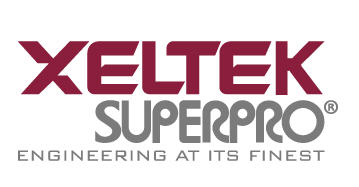OVERVIEW OF RETURN MERCHANDISE AUTHORIZATION (RMA)
A return Merchandise Authorization is an authorization granted by the seller to a customer that gives consent for returning a purchased product.
That "authorization" is an important part of the Customer Returns Process because most steps involved in that process revolve around the RMA Case that is created after the consent. Because a vendor can have many simultaneous RMA cases opened, each RMA Case is usually assigned a unique number (RMA Number) for easy identification.
Sellers can be a manufacturer, a distributor or a retailer. A Return Merchandise Authorization is commonly referred to with its or abbreviation "RMA". There are a number of stages for processing a Return Merchandise authorization and they will be discussed below.
- RMA Request
- RMA Form
- RMA Number, RMA ID,Case Number or Case ID
- RMA Label or RMA Returns Label
- RMA Case
- RMA Reason for return
- RMA Findings
- RMA Resolution
In most cases, the customer returns process has these major stages:
-
Customer: Requesting the RMA.
Customer contacts the seller to send an RMA Request. Unfortunately, most stores still process their RMAs manually. Customers still have to contact them by email, or worse by phone -- in order to request that authorization. Not only is it very inefficient but that manual process causes many frustrations for both parties, the customer and the vendor side.
Thankfully, nowadays automated Customer Returns Processing softwares like RMAPORTAL improves this otherwise very tedious process by a thousand percent.
Customers will have to fill-out an RMA Form with details about the customer and the product being returned. -
Vendor: Approves the RMA and assigns an RMA Number.
At this point, any reference to that case will be identified using that RMA Number. Any subsequent actions by the customer and the vendor will have a reference to that number. Vendor gives instructions to the customer to specify that number when sending in his stuff. It is very common these days that a vendor will provide a free return shipping label to the customer. That label already contains the RMA Number on it. Note that vendors can also close the RMA request at this point by rejecting the RMA request. -
Customer: Receives the RMA Number.
A customer would write that number on the packing slip that is to be sent with the items. The packing slip should also list the item(s) included in the return. The RMA Number should always be present in the packing slip, even though that number is already printed on the free return shipping label. This is to ensure that the vendor will be able to easily match the items with the customer account. Shipping labels usually get smudged or damaged.
RMAPORTAL's Returns Processing Software has a feature that automatically generates a packing slip. That packing slip may also contain a barcode of the RMA Case ID which can aid the company's receiving center in easily identifying the returns package.
-
Vendor: Receives the items listed on the RMA
Vendor receives the items. Receiver is supposed to log or record the items that were actually received -- NOT based solely on the list of items on the packing slip. A good RMA logging system should be able to tie up those received items and the RMA number of that package. There are times when a customer will send in invalid items such as items that were not actually acquired from the vendor. If that happens, the RMA can be closed right away.
Ideally at this point, a customer should receive instant email notification that his returns have been received. This bit of information will give customers peace of mind knowing that the package he/she sent actually made it back to the vendor.
As a vendor, if you want this level of automation then you should consider utilizing RMAPORTAL web-based Returns software.
RMAPORTAL includes very strong features like instant notifications for every stage of an RMA case's life cycle. -
Vendor: Inspecting the received items and records findings.
The inspector inspects the received item(s) and verify whether item is still under warranty or whether the item is indeed defective or not. Normally, a vendor would have a checklist of items to check and it is crucial for the inspector to record everything as accurately as possible. This is a great opportunity for the vendor to collect pertinent information about the problem. An aggregated summary of all of those records will enable the vendor to establish a pattern which is useful in determining future courses of action. -
Vendor: Escalating the RMA to other vendor-specific processing steps.
There may be multiple stages in an RMA case's life cycle, some vendors will have way more processing stages than others. A vendor may choose to settle with the customer first (send the refund request or replacement) before closing the RMA case. A good automated RMA software should give vendors the ability to have instant notifications also being sent out customers as the RMA passes each of the processing stages. Customers can easily get anxious and they always want to get informed about the latest update about their return. Common questions like 'when am i gonna get my refund', 'when will i receive the replacement part', 'when will my item get fixed' and others cause the customer to get anxious. When that happens, the customer calls up the vendor and an uncomfortable conversation usually ensues. It takes up so much of customer time and he usually gets upset, it starts a bad impression of the vendor. And not only that, the vendor also takes away very important time attending to the customer's inquiry instead of spending that time actually working on revenue-related tasks.
When you have a highly reliable RMA processing software like RMAPORTAL that will take care of those tedious tasks for you then you already have an edge over your competitions.With RMAPORTAL's Returns Management system, a vendor can generate custom or user-defined stages or statuses. A customizable message (or email) can be triggered to different internal departments as a case moves through different stages. These notifications aid these departments in preparing/acting on those cases in a very timely manner.
-
Vendor: Closes the RMA case and assigns a case resolution.
An RMA will go through several stages until a vendor can declare that issue as closed. -
Vendor: Informs the customer about the findings and resolution.
A vendor should immediately notify its customer of the final findings and resolution of the returned item. -
Customer: Receives a refund, a replacement or repaired product.
This is the completion of the returns process for the customer.












